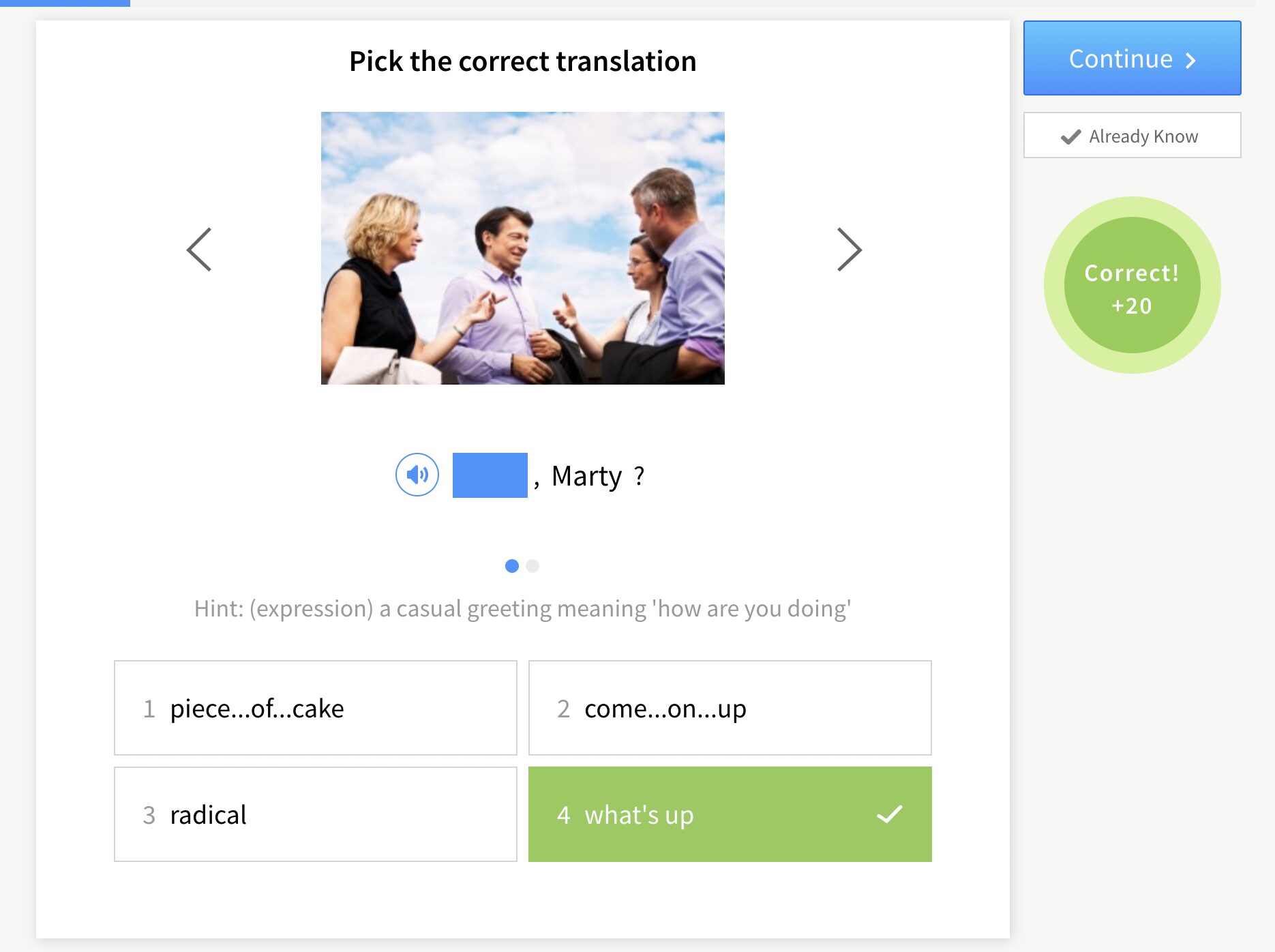7 Culture Shock Activities for the ESL Classroom

Before I moved to Argentina, I learned a little about culture shock in my language classes. However, no one taught me about the most important differences, such as body language (greeting with a kiss) and time differences (an afternoon snack and dinner at nine in the evening).
Your ESL students can learn about cultural differences before they show up in an English-speaking country. Here are a few ideas for introducing pupils to a new culture without taking them out of the classroom.
Download: This blog post is available as a convenient and portable PDF that you can take anywhere. Click here to get a copy. (Download)
1. Greetings
The most important part of communication is the first impression. Usually, that starts with a “Hello!”
But greetings aren’t just about words—they’re also about body language and tone.
In some cultures, a kiss is best. In others, a hug or handshake is preferred. In others, just verbally saying “Hi” without any physical contact is safest.
Remember that how to greet depends not only on culture but also on context. Are you friends with the person? Did you just meet? Are they a coworker? A manager? These are all important social cues, too.
Start your students out with another theoretical whiteboard write-up:
Teach:
- Phrases people typically use to verbally greet one another. This can include: “Hello,” “Hi,” “Hey, how’s it going?” and “How are you?” among others. This is also an opportunity to introduce formal vs. casual ways of saying hello. Go over which verbal greetings are best for a friend, an acquaintance, a boss, etc.
- How English speakers physically greet each other. This is dependent on the culture, but in general, we can say that a handshake or wave is for people we’ve just met and a hug is for a friend.
Some of your students may find that their customs are pretty similar to the English-speaking country, while others may find they have a lot in common with another student’s culture. All of this just adds to the richness of the conversation and the cultural exchange.
Practice:
- Pair work: Have pupils practice the different greetings with each other in pairs both verbally and through body language.
- Role-playing: Break students into groups and give them a setting. It can be a formal gathering, business, party, on the street, etc. Students will practice greeting one another in context.
2. Routines
One thing you may notice when becoming immersed in another culture is timing.
A very common issue of Argentine expats, for example, is: “I have to wait until 9 p.m. or later for dinner!?”
This doesn’t seem civilized until you realize there’s an afternoon snack around 6 p.m.
These types of things are nice to bring up to ESL learners who aren’t on the same timetable as the English-speaking culture you’re introducing. For some students, dinner starting between five and seven is surely too early!
Eating isn’t the only difference in timing among cultures, of course. Remember that for your first whiteboard step.
Teach:
- Timing of common activities. When are meals, when does school/work start and end, how late do parties go, etc.
- Contrast with a list of bullet points for their culture(s).
Practice:
Write a quiz-like practice to test the students’ memory of the information.
- They’ll answer questions such as: It’s 6 p.m. in the U.S. What might a North American person be doing?
- And multiple choice: At 11 am, a North American is probably A. B. C., etc.
3. Food
We typically enjoy the food we’re most used to. Sometimes, foreign cuisine can seem “weird” or “gross.”
However, there are some great new surprises waiting in almost every non-native environment.
For example, while at first I was resentful of the lack of spice in Argentine food, I now actively crave Buenos Aires pizza.
Teach:
- Typical breakfast, lunch, snack and dinner foods (and what time they’re eaten, if you didn’t already cover that).
- Contrast with the students’ native culture(s) using a bullet point list.
Practice:
- Worksheet: Hand out a menu with common foods from the English culture you’re exploring. Students practice by ordering food off the menu.
- Role play: Choose a common cultural food to make, and get students to narrate a step-by-step recipe. The cooking activity will also help students review or incorporate simple commands. For example: “Mix salt and sugar into the dough,” “Add chocolate chips.” (A shout-out to one of my favorite North American desserts!)
4. Socializing
It’s not just greetings or timing that can cause a bit of disorientation for language learners.
Parties, social gatherings, chatting with neighbors and hanging out with coworkers are situations that often bring up a whole new set of questions: “I just met them. Do I shake hands? Do I ask them what their job is? Do I wait for them to talk to me?”
Humans tend to have a Venn diagram of talking and eating or drinking when socializing, but even these situations can have many subtle differences.
Start students out by talking about their experiences with get-togethers, work dynamics, parties and various other social contexts they have been in.
Teach:
- Share a couple of points about customs and typical kinds of interactions. You can reinforce points made about time differences and greetings in this section.
- With student input, you can again make a list of differences/similarities between cultures.
Practice:
This is a perfect opportunity to get theatrical and bring out your learners’ inner writer.
To review cultural differences, have students write a dialogue between a person from the English-speaking culture and a person from their own culture. It should be about differences in social situations.
For example:
North American: Wow, I went out clubbing last night and stayed up so late.
Argentine: Yeah, me too. I love weekends. How late did you stay out?
North American: Like three in the morning. The clubs close here at 2 a.m., though.
Argentine: That’s not late! I was out ‘til 5. And then we were going to go to an after-party with Fer, but we decided we wanted to have breakfast at McDonald’s instead.
This, of course, is just an example. Students can write about whichever social activity they like. They might discover that they have more shared experiences than differences across cultures, too!
If they’re comfortable performing the dialogues, encourage them to do so. If not, no pressure. It can be a homework assignment.
Additionally or alternatively, you can construct a typical social environment in the classroom. This could be a relaxed get-together, a house party with music or whatever your ESL learners like best.
This social situation immersion can even be paired with the food cooking activity if you want to bring in real elements of an experience (the cooking/baking itself, of course, would have to be done elsewhere).
Whatever you choose, the idea is to get students to enjoy the social scene and customs of a new culture. That will help to encourage their curiosity, and consequently, their vocabulary expansion and language production.
5. Transportation
Every city has its way of getting from point A to point B, and this can vary wildly from place to place.
In some cities, there’s a subway transportation system and many buses (Buenos Aires). In others, there are buses and a light rail (Seattle).
Additionally, each public transportation system has its own procedures and etiquette.
It’s likely that whatever English-speaking city your students are studying will have different methods of transportation and procedures than they’re used to.
Teach:
- Talk about prices and the procedure of taking a bus or subway around a specific English-speaking city (since the protocol varies from city to city, not country to country).
- Ask students to contrast this with their own home city (or cities), and write the differences on the whiteboard.
Practice:
Role-play typical transportation situations. For example:
- Not having enough credit on your card
- Buying a subway or bus card
- Recharging your card
- Telling a bus driver where you need to go
- Asking a bus driver or other passengers where the bus goes
If your pupils are based in an English-speaking country and actually have their own transportation cards, they can use these for the role play. If not, part of the activity could be making transportation cards for the bus or subway out of paper or other materials you have on hand.
6. Shopping
Going shopping is something I always think of as being pretty similar in all cultures: “How much is it?” “Oh, okay. I’ll buy it.”
How my selective memory betrays me sometimes.
For example, I’m back in the United States after living in Argentina and I constantly forget about the details: most items include tax, I have to tip more at restaurants, there’s a totally different system for paying with cards, I can actually get cash back when paying with a card and a host of other similar tiny details.
Apart from technicalities, some cultures have more of a negotiation policy while others are inflexible about pricing.
The U.S., for instance, is not known to have a strong haggling culture. Unless you’re at a garage sale (this will be another foreign concept for some learners!), you probably won’t be negotiating about the price of most items.
In other cultures, however, the game of negotiating price is present almost everywhere.
Contrasts like this, in addition to if and how much you should tip, are extremely important to teach because they’ll actively help students avoid conflict. They won’t feel the resentment of someone thinking they’re acting inappropriately or paying too much or too little while tipping.
Teach:
- Buying is a broad topic. Choose a maximum of five common vending/purchasing situations. For example: Buying clothes, going to a restaurant, taking a taxi, going to a garage sale, going grocery shopping. Use the scenarios you think will be most helpful to students.
- Ask them about the common protocol and etiquette in their culture(s) in each situation.
- Then, write the English-speaking buying procedures on the other side of the whiteboard. You can use videos to show this in action, like the shopping video from ESL Teaching Videos, which could help you out if you’re talking about British culture. The language learning program FluentU also has a variety of videos that include the situations above.
FluentU takes authentic videos—like music videos, movie trailers, news and inspiring talks—and turns them into personalized language learning lessons.
You can try FluentU for free for 2 weeks. Check out the website or download the iOS app or Android app.
P.S. Click here to take advantage of our current sale! (Expires at the end of this month.)

Practice:
Once you’re confident that your ESL learners have absorbed the information, you could:
- Do a worksheet activity checking their comprehension of taxes, tips, average prices and etiquette in the situations you studied.
- A shopping role-play by splitting students into five groups and assigning each group a previously-reviewed buying scenario to act out.
Review
After all that intense immersion, it’s time for a review.
An end-of-the-quarter (or end-of-the-unit) party is always a hit.
Split the classroom into seven groups. Each should have two assignments: make a dish (or bring a drink) and act out one of the seven culture shock activities (greetings, timing, food, social circumstances, transportation, buying).
For their actions, give ESL learners total creative freedom and see what they come up with. It could be a structured and performed play, there could be audience participation or it could be a modern dance. Trust your pupils to invent something fun and engaging.
The party can start with some light chatting and heavy snacking (all in English, of course). After this, students will present their artistic representations of an aspect of the English-speaking culture.
Depending on how much time you have and your students’ personalities, you can add in more activities, like party games such as charades, or a dance party with typical music from the English culture.
Download: This blog post is available as a convenient and portable PDF that you can take anywhere. Click here to get a copy. (Download)
And One More Thing…
If you’re like me and prefer learning English on your own time, from the comfort of your smart device, I’ve got something you’ll love.
With FluentU’s Chrome Extension, you can turn any YouTube or Netflix video with subtitles into an interactive language lesson. That means you can learn from real-world content, just as native English speakers actually speak.
You can even import your favorite YouTube videos into your FluentU account. If you’re not sure where to start, check out our curated library of videos that are handpicked for beginners and intermediate learners, as you can see here:
FluentU brings native English videos within reach. With interactive captions, you can hover over any word to see an image, definition, and pronunciation.
Just click on the word to see other example sentences and videos where the word is used in different contexts. Plus, you can add it to your flashcards! For example, if I tap on the word "viral," this is what pops up:
Want to make sure you really remember what you've learned? We’ve got you covered. Practice and reinforce the vocab from each video with learn mode. Swipe to see more examples of the word you’re learning, and play mini-games with our dynamic flashcards.
The best part? FluentU tracks everything you’re learning and uses that to create a personalized experience just for you. You’ll get extra practice with tricky words and even be reminded when it’s time to review—so nothing slips through the cracks.
Start using the FluentU website on your computer or tablet or, better yet, download our from the App Store or Google Play.
Click here to take advantage of our current sale! (Expires at the end of this month.)













